The Best Lenses for Your Sony Mirrorless Camera
posted Monday, May 10, 2021 at 7:30 AM EDT
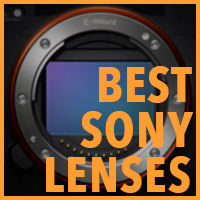
So, you've just picked up your first Sony camera? Or maybe you've had one for a little while and are looking to expand your camera setup beyond the included kit lens? Entry-level or experienced photographer? Whatever the case may be, the great news is that the Sony mirrorless camera ecosystem is a versatile and capable system that offers something for everyone.
Sony mirrorless cameras are wide-ranging both in price and features, generally offering something for every level of photographer, and are also capable for nearly every type of photographic pursuit, be it landscape photography, portraiture, sports and wildlife or astrophotography. But, the key to capturing stunning photos (or video) of your desired subject is getting the right lens for the job. While your kit lens may be pretty good, making a small investment in additional lenses can dramatically boost the creative flexibility of your camera -- and the quality of your photos.
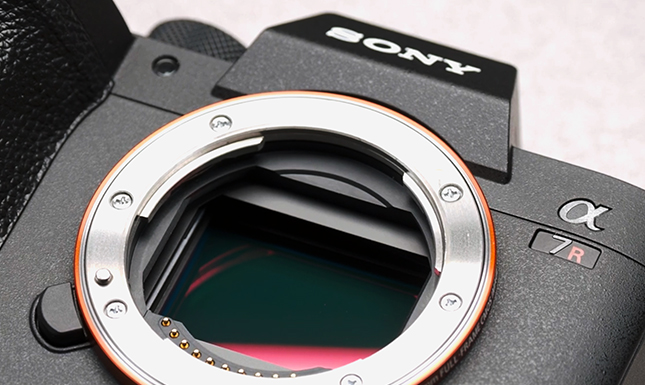
So, what lens should you buy?
The answer involves several factors. Much like other camera and lens manufacturers, Sony makes a wide variety of lenses in different quality levels and price points. There are two very important considerations. The first being what type of images you are looking to create. The other being your budget. When looking for the "Best Lens," it might be tempting or easy to simply look down the list and choose the highest-priced one. Chances are, it's a fantastic lens. Truth be told, an expensive lens is often a very good one, too. But, most of us out there, ourselves here at IR included, must keep an eye on our budget. As such, we've tried to keep the price in mind when it comes to making lens recommendations.
For organization's sake, we've also broken down our lens recommendations below into separate categories depending on the type or style of photography.
Without further ado, if you're looking to upgrade the lens or lenses for your Sony mirrorless camera, then read on!
Navigation - use the category links below to jump directly to the specific section:
- Best Sony Lens for Landscape Photography
- Best Sony Lens for Travel & Street Photography
- Best Sony Lens for Portrait Photography
- Best Sony Lens for Sports Photography
- Best Sony Lens for Wildlife Photography
- Best Sony Lens for Astrophotography
• • •
Best Sony Lens for Landscape Photography
One of the key characteristics of a typical landscape lens is a wide-angle or ultra-wide-angle focal length, which for full-frame cameras is generally 24mm or shorter. These types of lenses let you capture more of the scene, which makes them ideal for landscape photography. Imagine a dramatic mountain vista, a wide-open field or a massive waterfall: A wide-angle lens is a good choice for all of these shooting scenarios. Wide-angle lenses are also great for emphasizing a foreground subject. Shoot wide and get in close, and your subject will dominate the frame.
Full-frame: Sigma 14-24mm f/2.8 DG DN Art
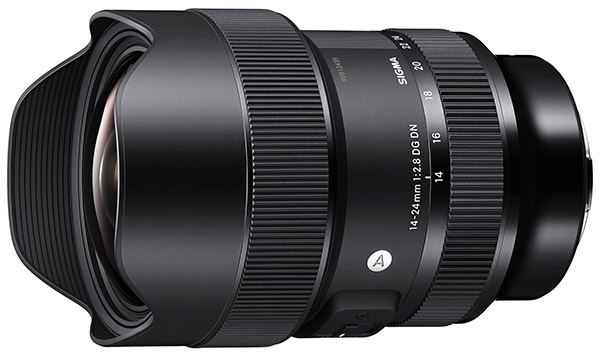
When it comes to recommending a landscape lens for a Sony mirrorless camera, there are several options to consider, ranging from the ultra-wide 12-24mm range to a more versatile 24-70mm. Our top pick for a Sony mirrorless landscape lens, one that offers a classic ultra-wide to wide zoom versatility, high image quality and a solid value, is the Sigma 14-24mm f/2.8 DG DN Art lens.
We reviewed the DSLR version of this 14-24mm f/2.8 lens a few years ago and praised its image quality performance and build quality. Plus, with its constant f/2.8 aperture, it's also a great choice for low-light shooting and night photography tasks, as well. We've not yet reviewed the mirrorless version, and while Sigma has updated the optical design of the 14-24mm f/2.8 DG DN Art, the user reviews are overwhelmingly positive. Given our experience with Sigma Art-series lenses, we can't help but expect fantastic optical performance from this updated 14-24mm f/2.8 DG DN Art lens. And with a price point of $1,399 (currently $1,299 on sale, as of publishing), it's much more friendly to the wallet compared to most of Sony's comparable ultra-wide-angle lenses.
Try It Before You Buy It? -- Rent this lens from Lensrentals
Alternatives:
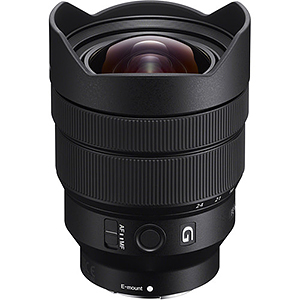
If your budget can handle it, or you really want a Sony-brand landscape lens, there are quite a few options to consider. Our top pick in this arena is the Sony FE 12-24mm f/4 G. Offering fantastic image quality and rugged build quality, the Sony 12-24mm f/4 is sharp and ultra-wide; wider than the 14mm maximum of the Sigma lens. The F/4 aperture design helps keep the size and weight down, too. For landscape photography, you're also often shooting with a deep depth of field, so having a brighter aperture isn't always necessary. The price is a bit steep compared to the Sigma, however, with the FE 12-24mm f/4 G coming in at $1,773.
Try It Before You Buy It? -- Rent this lens from Lensrentals
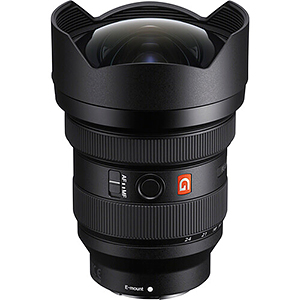
If you want to go all-out and have the budget to handle it, the Sony FE 12-24mm f/2.8 GM is the ultimate ultra-wide-angle lens for Sony mirrorless cameras. Part of the G Master line, FE 12-24mm f/2.8 GM is a top-of-the-line lens with fantastic optical performance. It's tack-sharp wide open and has excellent handling of CA and flare, for example. AF speeds are swift and build quality is great, plus the f/2.8 aperture gives it a leg up for low-light work. The downside is the price tag: a whopping $2,999.
Try It Before You Buy It? -- Rent this lens from Lensrentals
Crop-frame: Sony E 10-18mm f/4 OSS
For crop-frame shooters, with cameras such as the A6600, A6400, or A6100, using a native APS-C-format lens for landscape photography and other wide-angle shooting is important. You can, of course, use full-frame "FE" format lenses on a crop-frame Sony camera (they all use the same lens mount). The crop-factor introduced by the smaller sensor will reduce some of the wide-angle field of view if you use a full-frame lens.
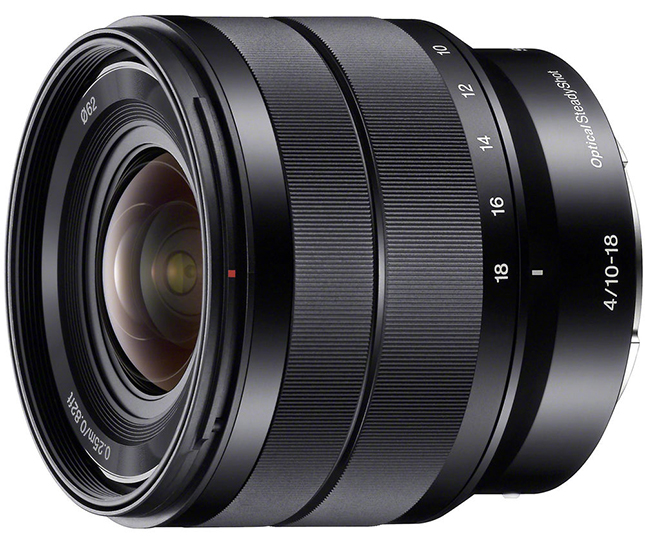
Our pick for crop-sensor photographers is the Sony E 10-18mm f/4 ED OSS. Offering the widest-angle zoom range in the Sony E-mount lens lineup, the 10-18mm lens offers a 15-27mm-equivalent field of view, which makes it a versatile and capable landscape photography lens. Though we have not reviewed this lens, user reviews and other reviews are by and large extremely positive, with praise going to its optical performance in most situations, its lightweight and compact design, built-in image stabilization and the ability to use front screw-on filters. With a price of around $800, it won't set you back too much.
Try It Before You Buy It? -- Rent this lens from Lensrentals
Best Sony Lens for Travel & Street Photography
Picking a lens for travel and street photography can be a difficult task. For street photography, you might lean towards something small, lightweight and discreet, whereas for travel purposes, you'll likely do well with some zoom versatility. In both cases, though, you'll probably want to keep your Sony camera kit as simple and as lightweight as possible; in other words, a single-lens setup. Think: walking around on vacation, exploring a new city or going on a hike. Having a light but versatile camera setup is key.
Full-frame: Sony FE 24-105mm f/4 G
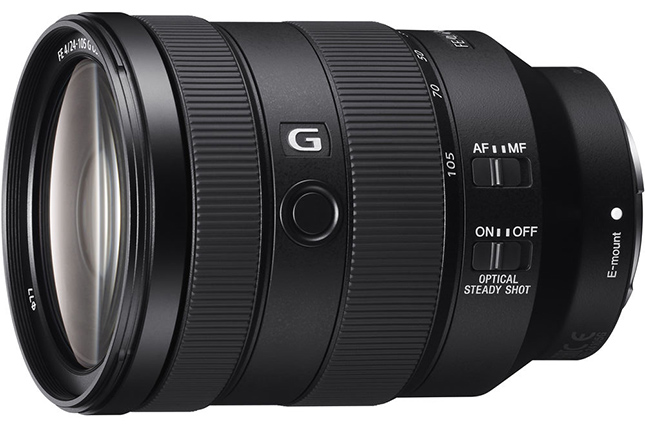
It's hard to ignore the versatility of a 24-105mm lens. There's a reason why these lenses are often kitted with full-frame cameras; they are super versatile -- landscapes, portraiture and, of course, general travel and street photography. The Sony FE 24-105mm f/4 G OSS is no exception. This all-in-one wide-to-tele zoom lens is a fantastic option for a Sony photographer looking for a single-lens setup for a day out shooting. Though we have not reviewed this lens yet, the user reviews are overwhelmingly positive, with owners praising its image quality, sharpness and versatility. The F/4 design isn't great for low-light, but with modern Sony cameras, the high ISO performance is fantastic, plus the 24-105mm lens has image stabilization (as do most Sony mirrorless cameras).
Try It Before You Buy It? -- Rent this lens from Lensrentals
Crop-frame: Sony E 16-70mm f/4 Z
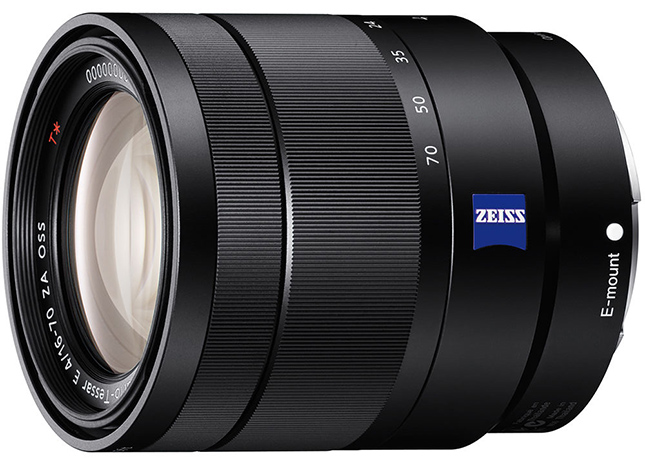
For crop-sensor photographers, Sony has you covered there as well. The Sony E 16-70mm f/4 Zeiss offers a similar 24-105mm-eq. zoom range, but in a more compact and lightweight form-factor designed for smaller APS-C Sony mirrorless cameras. In our review, the Sony E 16-70mm f/4 Zeiss proved to be an excellent performer, with very good image quality (even when shot wide open), and the AF was very fast. The lens is also surprisingly small, making it an excellent walk-around lens. It is a bit pricey, unfortunately, with a price tag of around $1000, but if you're looking for a highly-portably and high-quality all-in-one zoom for your crop-sensor Sony mirrorless cameras, look no further than the Sony E 16-70mm f/4 Zeiss.
Try It Before You Buy It? -- Rent this lens from Lensrentals
Best Sony Lens for Portrait Photography
When it comes to picking a lens for portraiture, you'll most likely want something with some telephoto reach. Wide-angle lenses, on the other hand, can distort and accentuate facial features in an unflattering way, whereas a longer standard-focal length or short telephoto lens will capture a more natural, more pleasing representation of your subject. Traditionally, an 85mm prime lens has been a classic portrait go-to, offering a good focal length for natural-looking portraits and good subject isolation thanks to the wider aperture than what you typically find on a kit zoom lens. The wide aperture helps blur out the background of your shot and help your subject stand out more.
Full-frame: Sony FE 85mm f/1.8
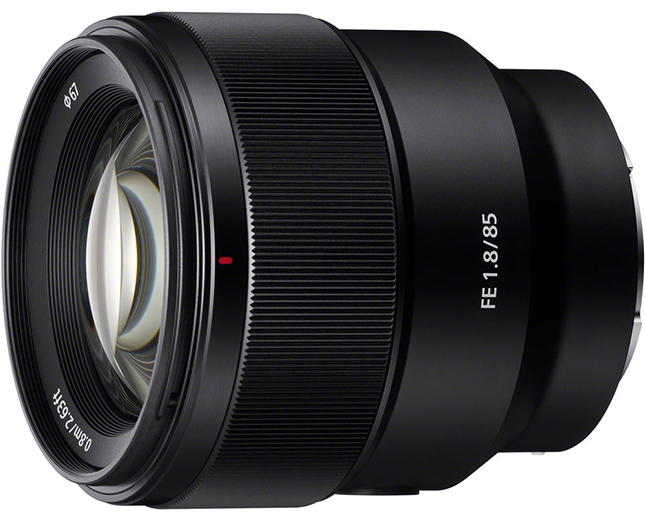
The compact and lightweight Sony FE 85mm f/1.8 might not be the brightest or fanciest 85mm prime on the market for Sony mirrorless cameras, but it more than makes up for it in its compactness, its overall excellent image quality and budget-friendly price point. Sure there are faster 85mm lenses, but the FE 85mm f/1.8 maximum f/1.8 aperture is plenty bright for low-light scenarios and still provides ample subject isolation and pleasing background blur. Plus, despite not being a higher-end G-series or G Master lens, the little FE 85mm f/1.8 still comes equipped with a dust- and moisture-resistant construction.
Though we've not yet reviewed the FE 85mm f/1.8 in-house, user reviews, as well as other reviews from industry colleagues, are overwhelmingly positive for this compact full-frame prime lens. Reviewers praise the lens' sharpness, size and bokeh as well as its overall value, with a price right at or a little under just $600, depending on sales or discounts. Overall, on a budget or not, the little Sony FE 85mm f/1.8 hits all the high marks for a solid portrait prime for Sony photographers.
Try It Before You Buy It? -- Rent this lens from Lensrentals
Upgrade Pick: Sigma 85mm f/1.4 DG DN Art
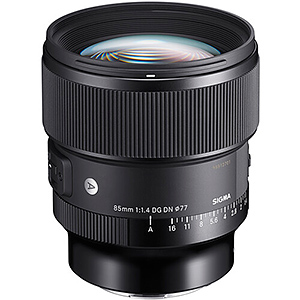
For those who want one of the best 85mm primes for their Sony gear bag, the recently redesigned Sigma 85mm f/1.4 DG DN Art is an absolutely wonderful pick. While Sony also offers a high-end 85mm f/1.8 GM lens, this ultra-bright Sigma prime is both less expensive and lighter in weight, yet still captures incredible images and offers rugged build quality. In fact, after shooting with it for a while, the Sigma 85mm f/1.4 DG DN Art lens was an easy winner as our Best Prime Lens of 2020.
Though Sigma already released an 85mm f/1.4 HSM Art DSLR lens some years back, this "DG DN" version has been redesigned for mirrorless cameras, namely Sony E-mount and L-mount cameras. The lens has been redesigned for mirrorless, utilizing a new optical formula and a new AF system powered by a stepper motor. All in all, the updated 85mm f/1.4 DG DN Art is a stunning portrait prime for Sony (or L-mount) mirrorless cameras.
Try It Before You Buy It? -- Rent this lens from Lensrentals
Best Sony Lens for Sports Photography
For sports photography, you'll most likely want a telephoto lens, something with reach to help bring the action up close. You'll most likely not be able to get right up next to the sidelines, so a longer telephoto lens will be critical to getting pleasing, action-packed sports photos. Now, depending on the particular sport you're photography, how much telephoto reach you'll need can vary dramatically, but a classic go-to for many different popular sports, such as football, soccer, basketball and tennis, is a 70-200mm lens -- and a 70-200mm f/2.8 variety, if possible.
The zoom design of a 70-200mm lens provides excellent versatility for a variety of sports subjects, and the 200mm reach at the long end is a really solid telephoto focal length for distant subjects. An f/2.8 aperture, though not absolutely critical for every sports photography endeavor, helps in several ways, including more pleasing subject isolation (out-of-focus backgrounds) and simply letting more light into the lens. The latter will let you shoot with faster shutter speeds, helping you get crisp, blur-free action shots; plus, it will help if you need to shoot indoors or in other lower-light situations, letting you also shoot with a lower ISO setting (and thus less noise and grain).
Full-frame: Tamron 70-180mm f/2.8 Di III VXD
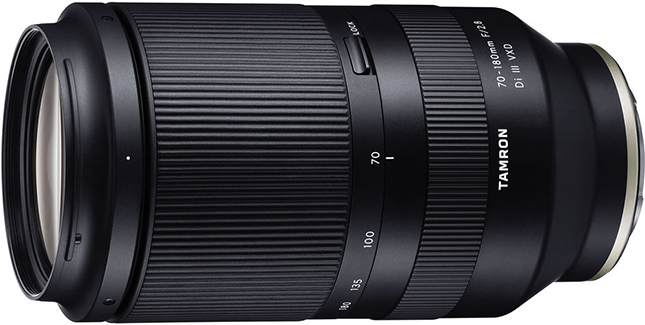
Though not technically a 70-200mm lens, the recent Tamron 70-180mm f/2.8 Di III zoom is a solid pick for a telephoto zoom lens for sports photography applications. It comes up just a bit short in telephoto reach with its 180mm maximum focal length, but it offers a fixed f/2.8 aperture for fast shutter speed capabilities, low-light work and good subject isolation. Plus, it's significantly lighter in weight than a competition 70-200mm lens, such as the Sony FE 70-200mm f/2.8 GM lens. It's also considerably less expensive than this Sony competitor, at $1200 compared to a whopping $2600.
Image quality is excellent, even wide-open, at both ends of the zoom range, and the weight savings really go a long way at making the Tamron zoom a pleasure to use for long periods of time. Plus, if you're an APS-C Sony shooter, the lens also works very well with these smaller cameras compared to longer, heavier telephoto options. All in all, with excellent image quality, fast AF performance, compact construction and a fantastic price point, it's no surprise that the Tamron 70-180mm f/2.8 Di III VXD got the nod onto our Lens of the Year picks for 2020 as a Telephoto Zoom Lens of Distinction. It's an excellent telephoto zoom for Sony sports photographers.
Try It Before You Buy It? -- Rent this lens from Lensrentals
Upgrade pick: Sony FE 70-200mm f/2.8 GM
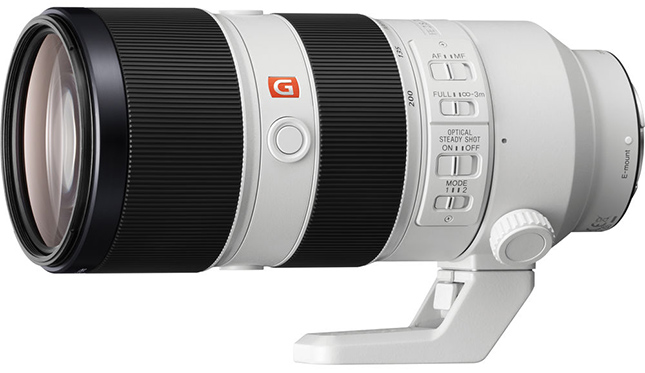
If price is no object and you want the top-of-the-line telephoto zoom lens for sports photography, the Sony FE 70-200mm f/2.8 GM lens is the go-to lens. Sony's flagship mid-telephoto zoom lens, the 70-200mm G Master lens, features fantastic image quality, swift autofocus and rugged, durable construction. It's also quite pricey, as one might imagine, at around $2,600.
Reviews of this lens are all overwhelmingly positive, with users noting the lens's excellent sharpness, color rendition and it's versatility -- not only due to its zoom design but also by the fact that it readily accepts teleconverters for even more reach. The lens is a bit heavy and expensive, but if you can look past those factors, the Sony FE 70-200mm f/2.8 GM is an absolute stunner.
Try It Before You Buy It? -- Rent this lens from Lensrentals
Best Sony Lens for Wildlife Photography
Much like a lens for sports, you're going to want a lens that offers a nice, longer telephoto focal length. In fact, in some cases, your "sports photography" telephoto lens can do double-duty as a wildlife photography lens. That said, a 70-200mm-style lens may not be telephoto enough for wildlife photography, especially if you want to photograph birds. When choosing a proper wildlife-focused telephoto lens, finding something that reaches out to a least 300mm to 400mm is a good starting point. When photographing wildlife, you probably won't be able to get very close to your subject, and so having a long telephoto lens will allow you bring that far-off subject up close.
Now, much like the other categories on this list, you also have a choice of prime (single focus length) or a zoom lens. Prime wildlife lenses can often be quite large and expensive, with some of the benefits there being fantastic optical quality and brighter apertures, which let them perform in lower light and have gorgeous shallow depth of field. That said, it's hard to look past the versatile of a zoom lens, which is why we're focusing on zoom lenses here for our recommendations.
Full-frame: Sony FE 200-600mm f/5.6-6.3 G OSS
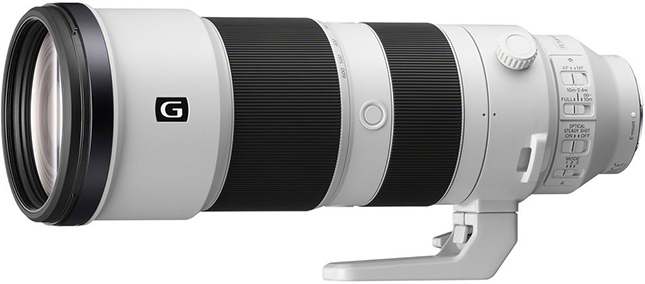
Though large and somewhat long in and of itself, the Sony FE 200-600mm f/5.6-6.3 G OSS lens is amazingly compact and lightweight given its wide, versatile focal length range, on-board optical image stabilization and full-frame image format. This G-series supertelephoto zoom lens offers wildlife photographers a fantastic zoom range for all sorts of outdoor photographic adventures. Plus, it provides that critical 400-600mm focal length range that really helps when photographing small or far-away subjects, such as birds. What even better is that despite its appearance as an all-out professionally-oriented lens, the price tag is well within the range of the serious enthusiast photographer, at around $2000.
Image quality from this super-zoom lens is outstanding, offering very sharp performance across the zoom range. The narrower and variable aperture design helps maintain the lens's smaller size but at the expense of low-light performance. That said, modern Sony cameras do very well with high ISOs, so the dimmer aperture it probably a tradeoff that most will overlook. The build quality is also excellent, with rugged, weather-sealed construction, and the internal-zooming design keeps the lens balanced and avoids lens creep that we often see with long-zoom lenses that extend. All in all, one of our favorite Sony lenses for wildlife photography!
Try It Before You Buy It? -- Rent this lens from Lensrentals
Best Sony Lens for Macro Photography
For macro photography, one of the mains characteristics to look for is a lens's close-focusing capabilities, or "minimum focusing distance." You want a lens that can focus very closely on a subject and still maintain crisp focus. Generally, a lens that is labeled as a "macro lens" offers a magnification factor of at least 1.0x, or a 1:1 magnification ratio. In other words, for a 1:1 macro lens at the closest focusing distance, the subject captured in the frame will be the same size as in the real world. There are other flavors of macro lenses, some with half-size (1:2) magnification ratios as well as more powerful lenses that offer 2:1 or even 5:1 magnification ratios for larger-than-life-size macro photography.
Sony themselves do not (yet?) make macro lenses higher than 1:1 mag. ratio, and generally, most of these high-powered macro lenses are manual-focus only. For our recommendations, we will stick to the more common and more versatile lenses that offer autofocus. Not only can they be used for macro photography, but they also work for more general-purpose photography, even portraiture.
Budget pick: Sony FE 50mm f/2.8 Macro
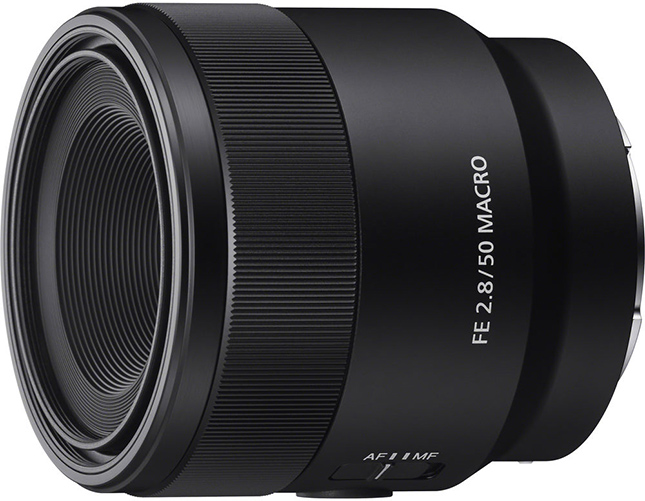
Sony's simple, compact FE 50mm f/2.8 Macro lens provides excellent close-up macro performance without weighing you down or hitting the wallet too hard. The focal length of the FE 50mm Macro lens is somewhat short as most macro lenses go. They tend to get more telephoto, allowing you to have some more working distance between you and your subjects. However, the FE 50mm f/2.8 Macro lens still offers full 1:1 macro capabilities, and the 50mm focal length lets the lens work nicely for general-purpose photography uses, as well.
Though we've not seen this lens in our lab, user reviews for the lens are largely positive, with owners noting the lens's great sharpness, good close-focusing performance and affordable price point. Some criticize its slower AF performance, so keep that in mind if you shoot lots of moving subjects -- however, the lens is designed for macro photography, so AF speed isn't generally a priority. Overall, a sharp and affordable lens that serves as a great entry into the world of macro photography.
Try It Before You Buy It? -- Rent this lens from Lensrentals
Upgrade pick: Sony FE 90mm f/2.8 Macro G
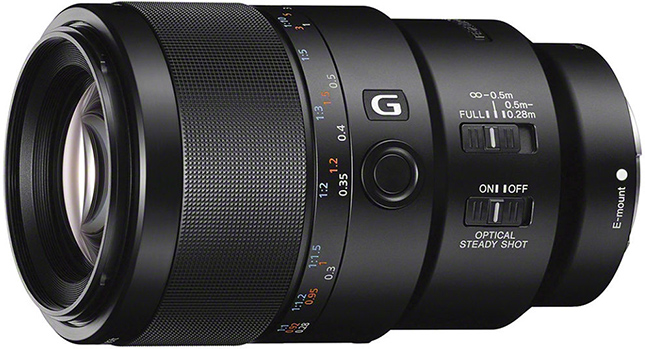
The premier Sony macro lens. The Sony FE 90mm f/2.8 Macro G lens was awarded a Lens of Distinction in the Best Prime Lens category of our 2015 Lenses of the Year awards for good reason. The lens is exceptionally sharp, features a rugged build, has on-board optical image stabilization, and despite its "Macro" moniker, offers surprisingly fast AF speeds. It's a bit on the pricey side, at around $1000, but the lens offers fantastic image quality performance. The lens is tack-sharp, offers full 1:1 magnification, and the 90mm focal length offers a nice working distance with your close-up subjects. Plus, the focal length combined with fast AF speeds and the bright aperture make the 90mm Macro lens a versatile optic for portraits and other mid-telephoto applications. An all-around fantastic lens.
Try It Before You Buy It? -- Rent this lens from Lensrentals
Best Sony Lens for Astrophotography
When it comes to photographing the night sky, astrophotography isn't really tied to any one focal length lens, technically, but oftentimes you want to capture a broad, expansive view of the night sky, stars, galaxies and the like. To do that, one needs a wide-angle or ultra-wide-angle lens, something very short, often less than 24mm, in order to capture a wide perspective. Additionally, another key factor for a good astrophotography lens is a wide or bright maximum aperture -- the brighter, the better in order to gather as much light as possible and keep the ISO levels down as much as possible. So while astrophotography compositions can come in all sorts of framing and perspectives, we're going to recommend a couple more common types of lenses: ultra-wide-angle lenses with bright apertures.
Full-frame: Sony FE 20mm f/1.8 G
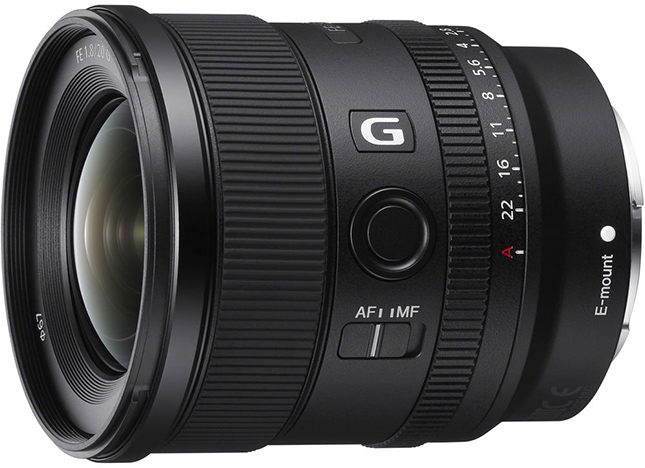
Sony compact FE 20mm f/1.8 G fits both main requirements for a solid astrophotography lens: ultra-wide and ultra-bright. The 20mm focal offers a fantastic ultra-wide perspective for expansive scenes, and the f/1.8 aperture allows for great light-gathering potential. The lens isn't as wide as some other ultra-wide lenses in the 12-14mm range, nor as bright as an f/1.4 lens, but these two factors help keep the size and weight as well as the price down to reasonable amounts.
The Sony FE 20mm f/1.8 is very new, debuting just this past year. We've not reviewed the lens ourselves yet, but user reviews across the web note the lens's sharp image quality performance, fast AF, small size and good control over coma (or comatic aberration) -- a type of optical distortion that can occur to point light sources, such as stars. A lens with low comatic aberration is an important quality to consider when looking for an astrophotography lens.
All in all, at around $800, the Sony FE 20mm f/1.8 G isn't the most affordable lens, but it offers a lot of bang for your buck.
Try It Before You Buy It? -- Rent this lens from Lensrentals
Upgrade pick: Sigma 14mm f/1.8 DG HSM Art
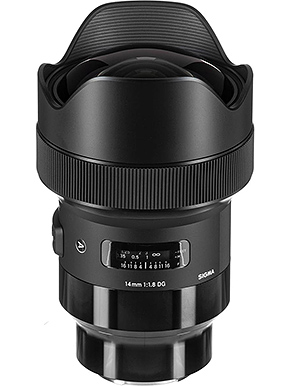
Choosing an upgrade option here is quite tricky because, at the time of publishing this article, Sony has just recently announced an FE 14mm f/1.8 GM lens that appears to be an all-out stunning lens, particularly for astrophotography. However, as it's so new, we've not yet had any chance to get hands-on with the lens, and reviews around the web are also few and far between -- particularly from other owners since the lens is not yet in stock.
As such, our other top recommendation for an upgrade pick is the Sigma 14mm f/1.8 DG HSM Art lens, the only other full-frame format lens with a 14mm focal length and an f/1.8 aperture. As an Art-series lens, the Sigma 14mm f/1.8 offers excellent and robust build quality as well as fantastic image quality performance, just like we've seen from most, if not all other Sigma Art-series lenses.
In our review, we praised the lens's image quality performance, even when used wide open -- which is very impressive. The super-wide aspect ratio is also very fun to use, offering a unique perspective for some very dramatic images. We also noted the lens performed very well in controlling comatic aberrations. Though originally designed as a DSLR lens, Sigma has since come out with a native Sony E-mount version of this lens, helping do away with the need to use a mount adapter.
If you want one of the best super-wide and super-bright lenses for night sky photography, the albeit pricey Sigma 14mm f/1.8 Art lens is worth considering.
Try It Before You Buy It? -- Rent this lens from Lensrentals
• • •
Curious about more lens recommendations for other brands and camera platforms? See our other articles:
• 8 best lenses for your new Canon DSLR •
• 11 best lenses for your new Nikon DSLR •
• The best Olympus lenses for pretty much everything •
• The Best Portrait Lenses for Every Camera Brand •
• • •